What is the Best Plugin for EQ Matching?
Eq matching has become a popular way to either match or separate instruments quickly. With that in mind it helps to know which EQ Matching plugin offers the most for your money.
We decided to compare two of the most popular equalizers with EQ matching software, the Izotope Ozone 6 Equalizer, and the FabFilter Pro Q 3.
Although Izotope has updated it’s line of Ozone products, including the Ozone Equalizer, it should be noted that in terms of EQ Matching, the functionality has remained nearly identical.
We’ll be comparing CPU usage, ease of use, and overall functionality to see which one offers the best user experience and most mixing capabilities.
Izotope Ozone 6 Equalizer:
Pros: Ease of Use
Using the Izotope Ozone 6 Equalizer or later models, really couldn’t be easier. It’s as simple as inserting the plugin on your output, clicking record for your reference audio, capturing it by playing the track, and then doing the same for your target audio.
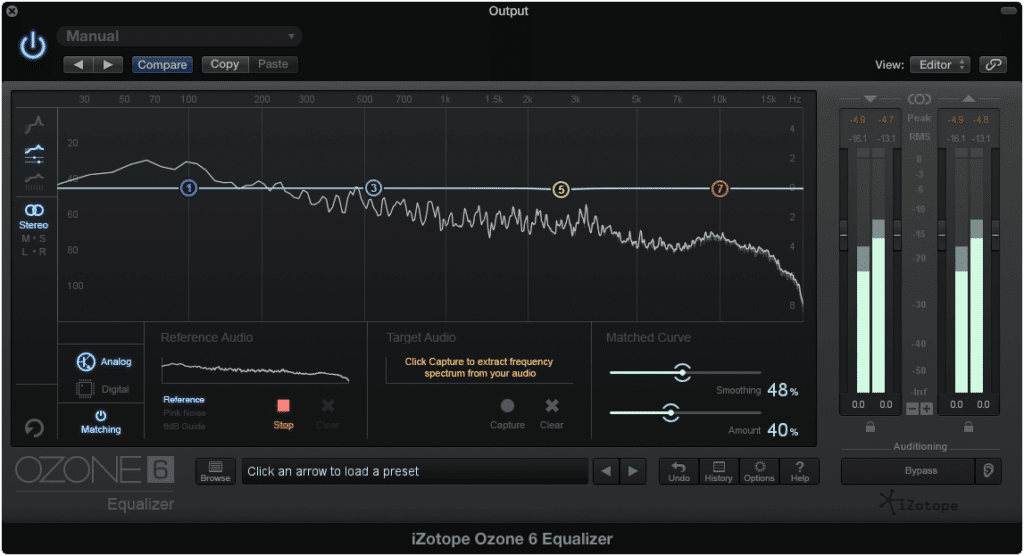
Place the EQ on your output and individually play the two signals you want to record.
Once this is complete you’ll be presented with a generated eq curve and the option to smooth and increase the amount of equalization applied.

The smoothing function is a combination of Q adjustment and the number of bands.
Cons: Limited Functionality
Once you’ve finished capturing your audio, you may realize that the ease of use is due to limited functionality.
You won’t have the option to edit your generated curve intensely, or invert it’s gain for separating purposes. You can’t decide how many bands you want to have or the specific Qs for those bands. These options have all been reduced and simplified to the ‘Amount’ and ‘Smoothing’ functions.
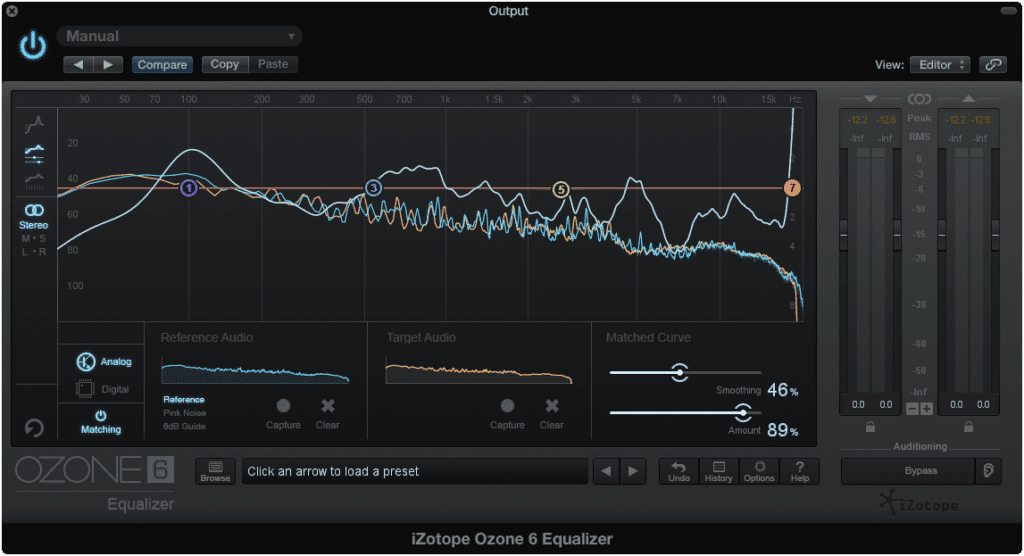
Creating new bands can alter the EQ curve, but not accurately.
Price: In order to purchase this equalizer you must pay for the entire 7 plugin mastering suite. In total this costs $250.00 USD.
FabFilter Pro Q 3:
Pros: Functionality
With the FabFilter Pro Q 3, once you match one track’s EQ to another, a world of possibilities open up.
You can select the numbers of bands in the curve, and then highlight these bands to affect them like you could in a typical eq setting.
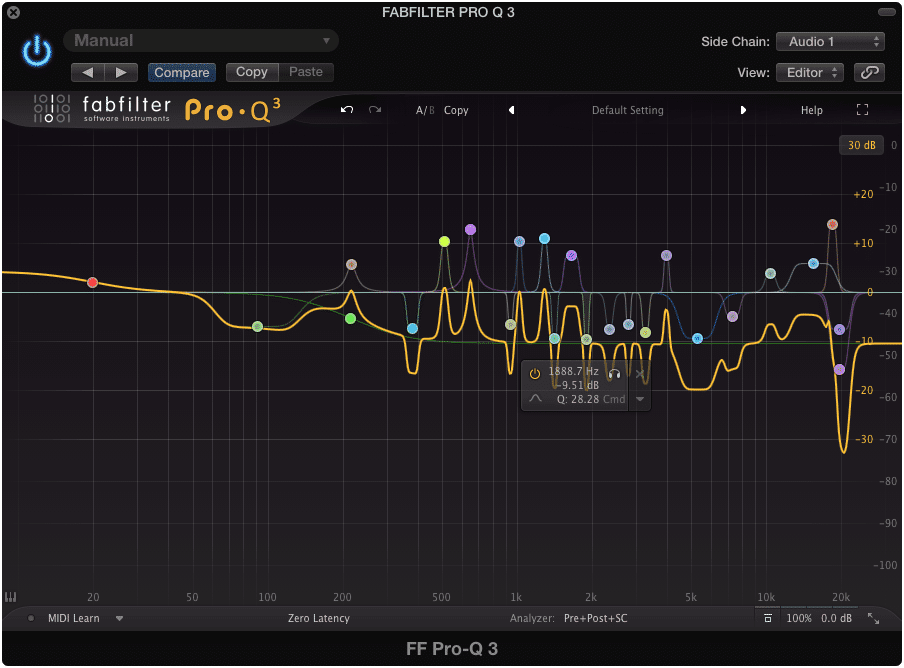
The number of bands can range from 1 to 24.
You can adjust their gain, Q, placement, or delete certain bands that sound disharmonious.
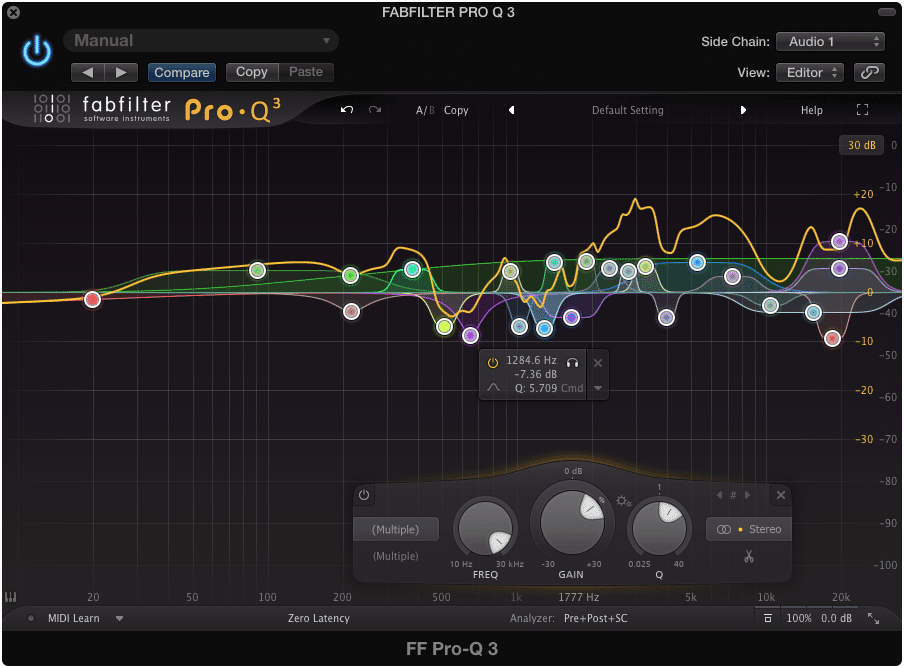
Delete low frequency bands if disharmonious fundamentals or harmonics occur.
Furthermore you can invert the gain of these bands, effectively causing the two tracks to be distinct and separate from one another. This is incredibly useful in convoluted mixes where instruments are fighting for sonic space.
Cons: Difficult to Operate at First
If you’ve gotten used to the ease of use with the Izotope Ozone 6, the FabFilter Pro Q 3 may seem confusing at first.
In my first few attempts to capture audio I noticed that I could accomplish it, but I couldn’t tell exactly from where the signal was being routed.
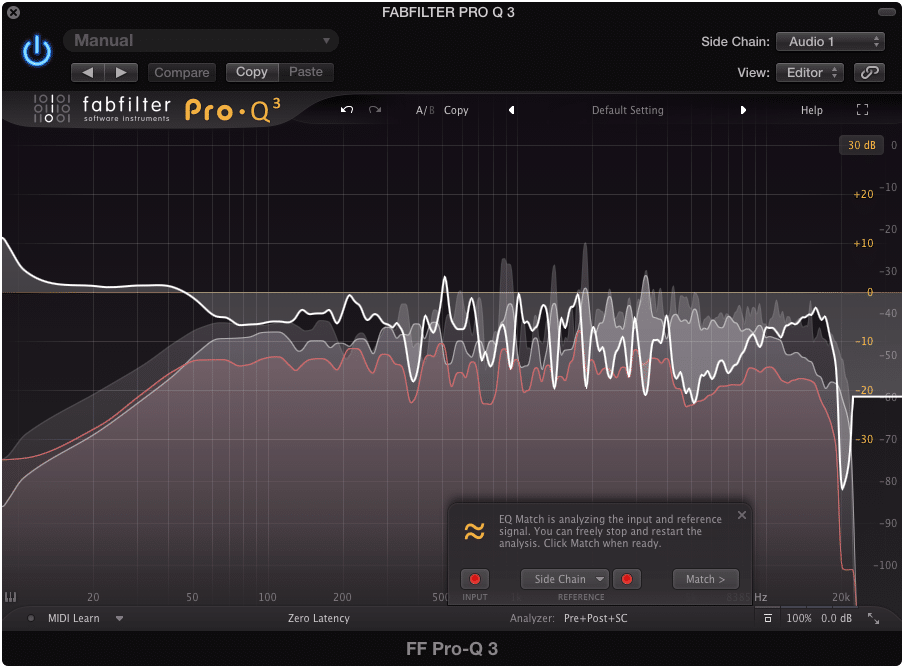
The quickest way to capture audio is insert the EQ on a track, and then side chaining another instrument.
This difficultly subsided pretty quickly however, as you explore the plugin’s options and looking into it’s eq match routing.
Price: $179.00 USD. This includes only the one plugin.
CPU Usage Test:
For this test we had two sessions. One in which the Izotope Ozone 6 Equalizer was placed on 16 tracks, another in which the FabFilter Pro Q 3 was placed on 16 tracks.
The sessions were identical, except for their relative plugin inserts.
During playback the FabFilter Pro Q 3 peaked around 20% of CPU and averaged around 12%.

FabFilter Pro Q 3: 13.3% of CPU Usage
The Izotope Ozone 6 Equalizer peaked around 40% and averaged around 35%.
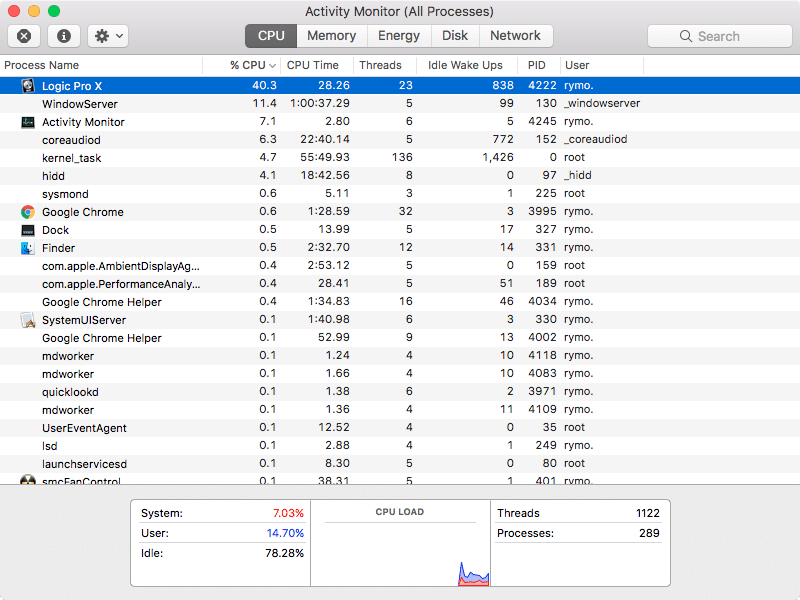
Izotope Ozone 6 Equalizer: 40.3% of CPU Usage
That being said, the FabFilter required significantly less CPU.
Conclusion:
The FabFilter Pro Q 3 offers increased functionality and low CPU usage, meaning it’s perfect for both mastering and mixing. It’s versatile enough to be used for both mixing and mastering applications.
The Izotope Ozone 6 Equalizer may be easier to use, but sacrifices functionality for the sake of simplicity.
Although the FabFilter Pro Q 3 may cost slightly more, considering the Ozone package comes with 6 other plugins, it is definitely the superior plugin.
What is your go to equalizer?




